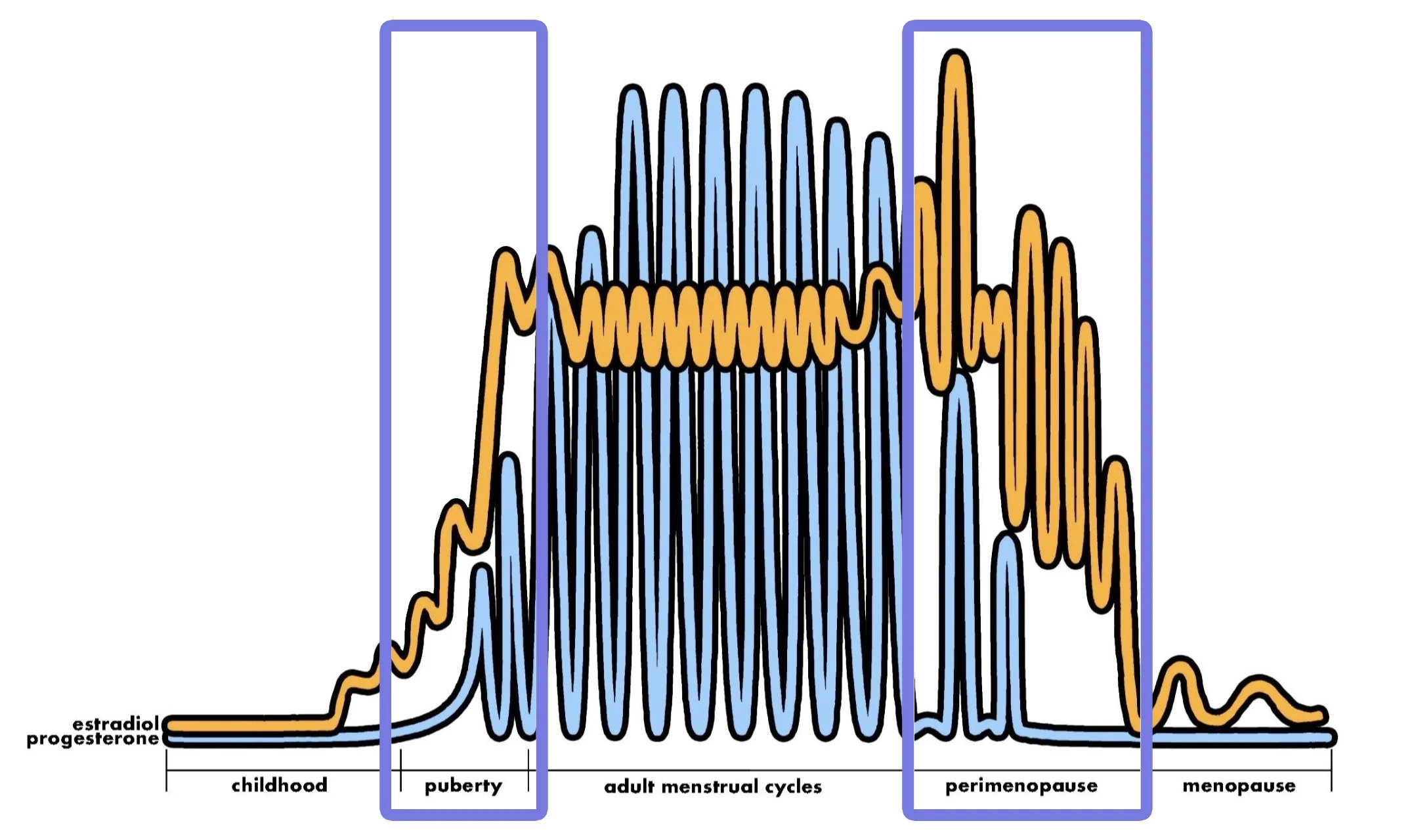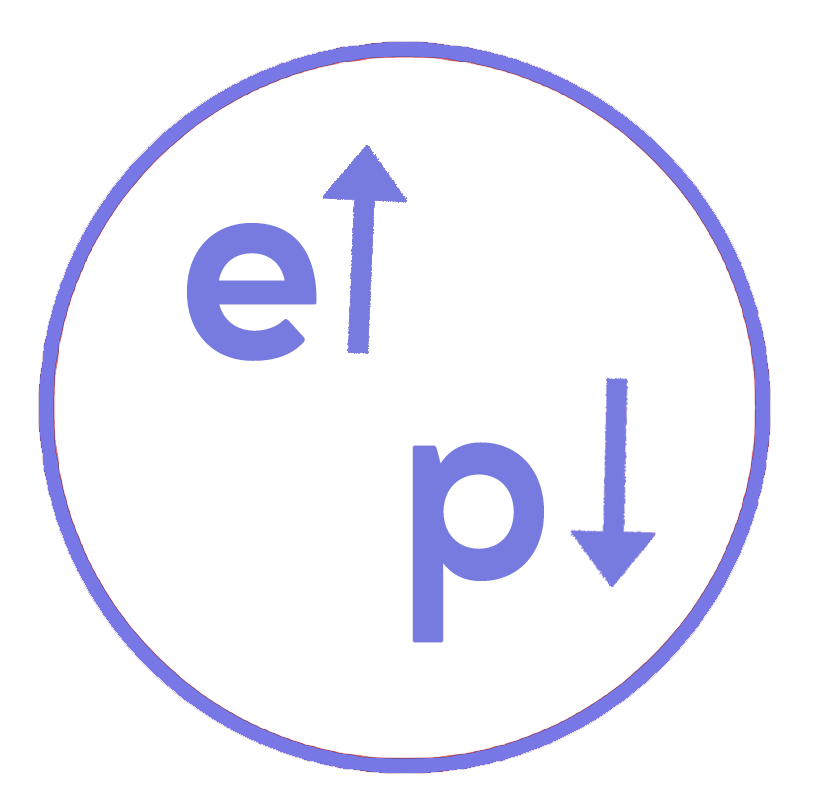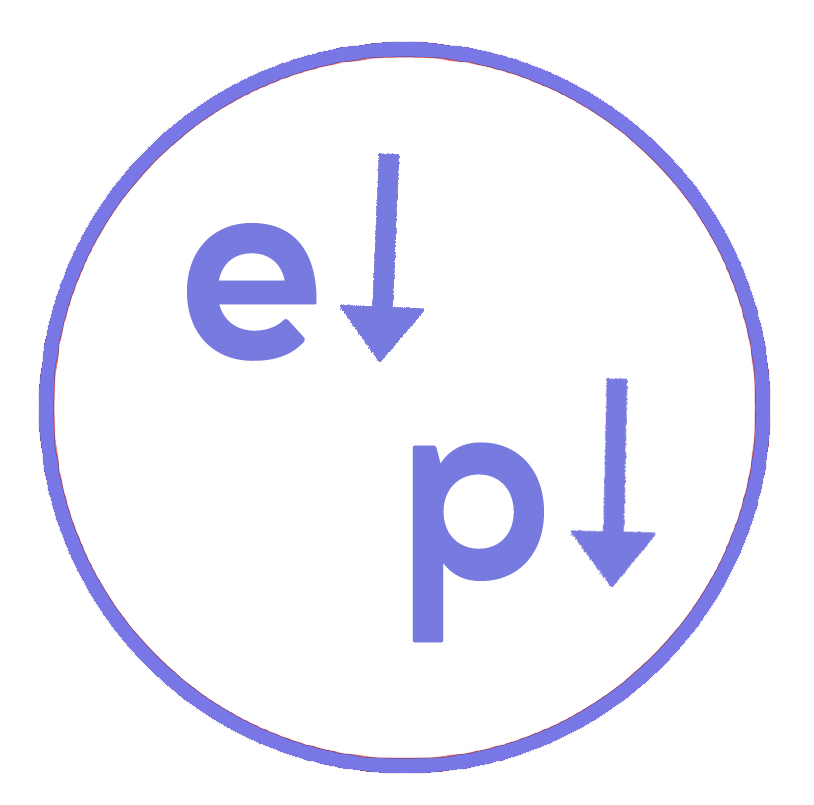Perimenopause
The transition beyond menstrual life

Perimenopause is a critical window for health
This part of menstrual life is an unfolding of events, a transition between your menstrual years into the graduated phase of life that is menopause.
Perimenopause is hormonally related to puberty
Stages of Perimenopause
Very Early Perimenopause
cycles are still regular, or you have slightly shorter luteal phases
less progesterone
higher, fluctuating estrogen (up to 3x higher than the menstrual years)
the onset of low progesterone symptoms (migraines, heavy menses and more pain, sleep changes)
this phase lasts 2-5 years
heavier menses, increased menstrual pain, migraines, and sleep disturbance.
Early Transition
cycle becomes more irregular by varying in length more than 7 days
estrogen fluctuates more wildly
sharp drops in estrogen from their high peaks can trigger hot flashes and night sweats
this phase lasts 2-3 years
Late Transition
This is when you have the first cycle longer than 60 days or a “missed menses”
hot flashes and night sweats intensify as estrogen continues to fluctuate before it makes its descent to a menopausal baseline
heavy menses are common at this stage
breast pain should start to subside
this phase lasts 4 years
Late Perimenopause
The 12 months after your final menstruation
low estrogen, low progesterone
hot flashes may continue for 1-2 years or longer
It’s important to ovulate for as long as possible.
Preventative health
Protect against
heart disease
breast cancer
osteoporosis
diabetes
neurological degeneration
Reflect On Menstrual Years
If you had easy menstrual years, perimenopause will be less likely to cause disturbance
If you had difficult menstrual years, perimenopause may cause more extreme symptoms
It’s Not Just Perimenopause
Symptoms can be a sign of an underlying health problem like thyroid disease
Perimenopause may make these health problems more apparent because of the deep connection between hormones and other parts of the body
Use Body Literacy As A Tool
FAM can help you track
progesterone levels
fluctuating estrogen
your symptoms
knowing which stage you’re in
<< Return to pregnancy & postpartum
Next to menopause >>






